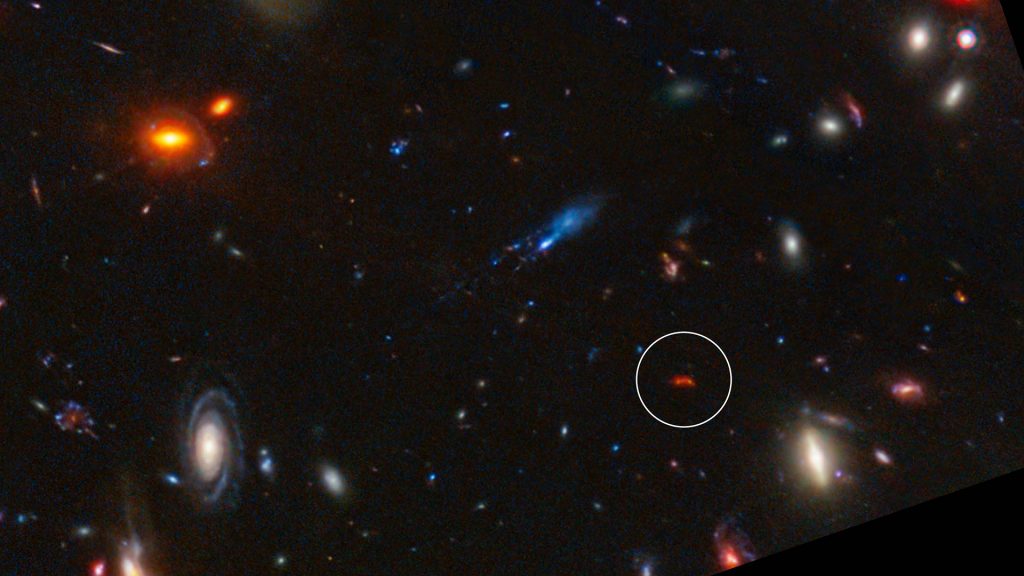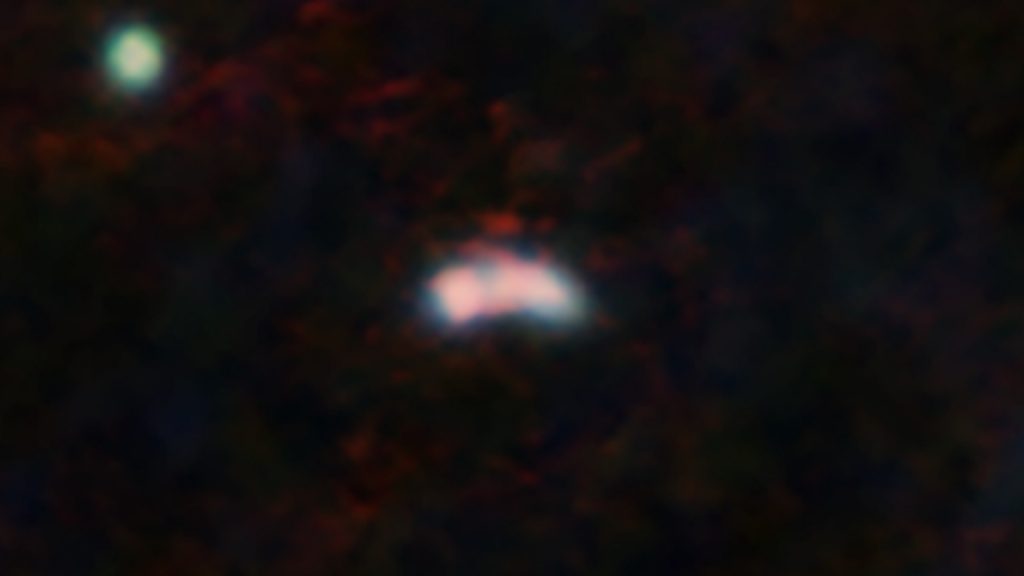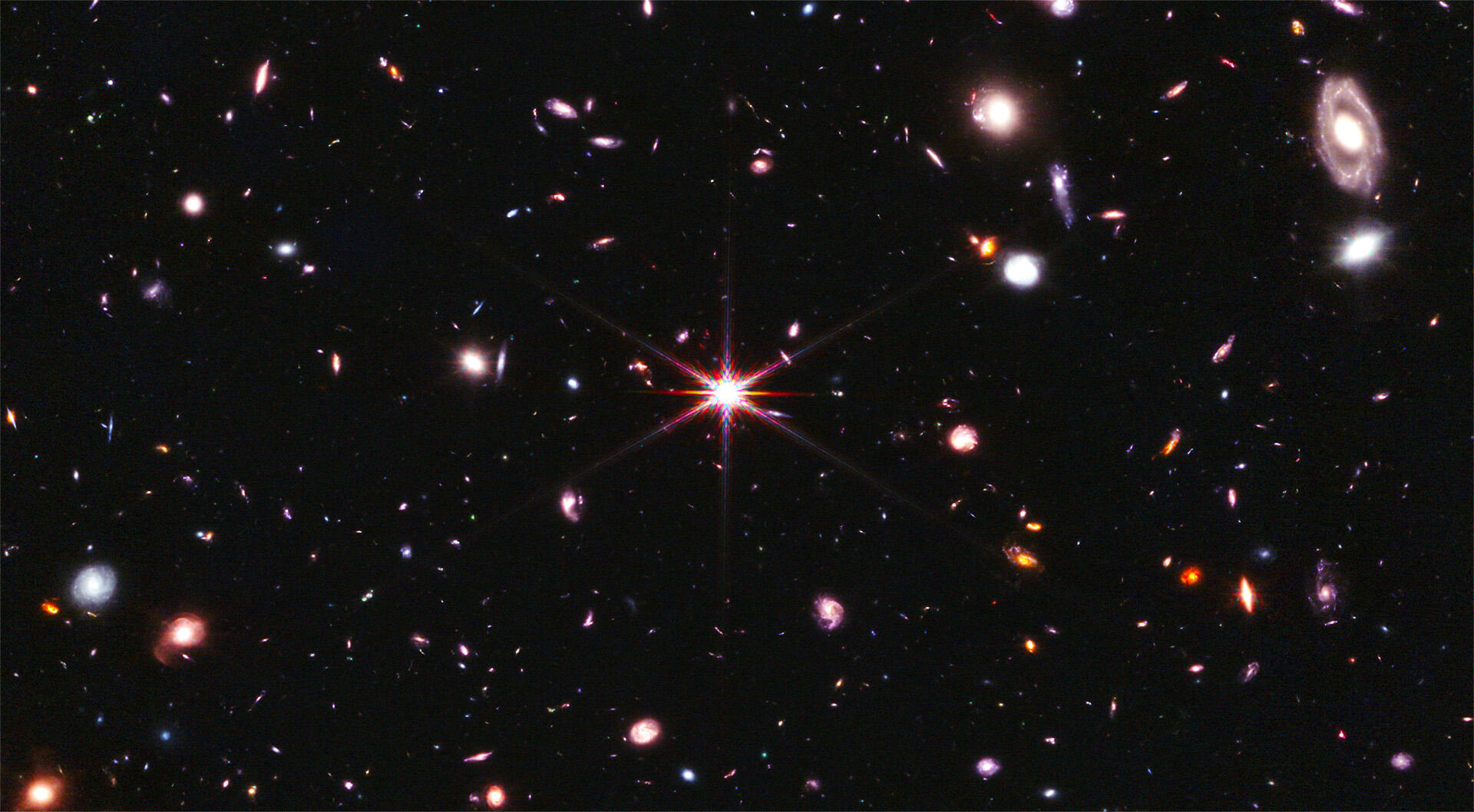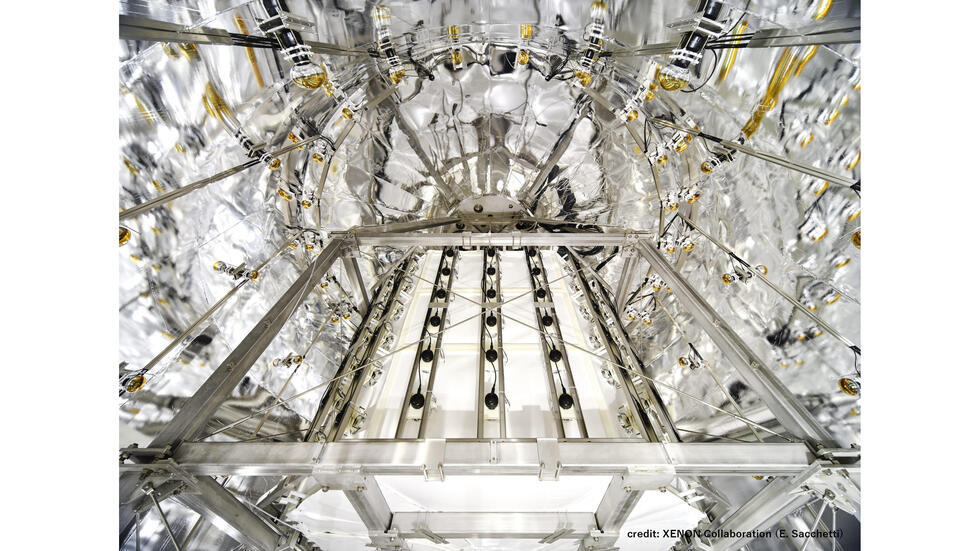
Astronomers have uncovered a previously unknown, extreme kind of star factory by taking the temperature of a distant galaxy using the ALMA telescope. The galaxy is glowing intensely in superheated cosmic dust whileforming stars 180 times faster than our own Milky Way. The discovery, published in Monthly Notices of the Royal Astronomical Society, indicates how galaxies could have grown quickly when the universe was very young, solving along-standing puzzle for astronomers.
The first generations of stars formed under conditions very different from anywhere we can see in the nearby universe today. Astronomers are studying these differences using powerful telescopes that can detect galaxies so far away their light has taken billions of years to reach us.
Now, an international team of astronomers has measured the temperature of one of the most distant known star factories. The galaxy, known as Y1, is so far away that its light has taken over 13 billion years to reach us.
“Y1 has the record for the most distant direct detection of cosmic dust ever observed. Previous observations showed surprisingly bright dust emission from this galaxy, suggesting it might be fundamentally different from other early galaxies. To understand what makes Y1 so unusual, we measured its dust temperature, a key indicator of how intensely stars form within the galaxy,” Dr. Masato Hagimoto, from the Graduate School of Science at Nagoya University, explained.
Stars like our Sun are forged in huge, dense clouds of gas and dust in space called nebulae. The Orion Nebula and the Carina Nebula are two examples of such star factories. They shine brightly in the night sky, powered by their youngest and most massive stars, which light up clouds of gas and dust in many different colors.
At wavelengths longer than the human eye can see, star factories shine brightly thanks to huge numbers of tiny grains of cosmic dust, heated by starlight.
To be able to probe the galaxy’s temperature, the scientists needed the superior sensitivity of ALMA, one of the world’s largest telescopes. ALMA’s dry, high-altitude location made it possible to image the galaxy in just the right color, at a wavelength of 0.44 millimeters.
At this wavelength, the galaxy is lit up by billowing clouds of glowing dust grains. When the researchers saw how bright Y1 shines compared to other wavelengths, they immediately knew they were looking at something truly special. ALMA’s observation showed the galaxy’s dust glowing at a temperature of around -180 degrees Celsius (90 Kelvin).
“This temperature is certainly chilly compared to household dust on Earth, but it’s much warmer than any other comparable galaxy we’ve seen. It confirmed that Y1 really is an extreme star factory. Even though it’s the first time we’ve seen a galaxy like this, we think that there could be many more out there,” coauthor Professor Yoichi Tamura from Nagoya University noted.
Y1 is manufacturing stars at the extreme rate of over 180 solar masses per year, an unsustainable pace that cannot last long on cosmological scales. On average, our galaxy, the Milky Way, creates only about one solar mass per year. The scientists suspect that brief, hidden bursts of star formation, as seen in Y1, may have been common in the early universe.
“We don’t know how common such phases might be in the early universe, so in the future we want to look for more examples of star factories like this. We also plan to use the high-resolution capabilities of ALMA to take a closer look at how this galaxy works,” said Dr. Tom Bakx, lead author at Chalmers University of Technology, and former Nagoya University researcher.

The researchers believe that galaxy Y1 may help solve another cosmic mystery. Earlier studies have shown that galaxies in the early universe appear to have far more dust than their stars could have produced in the short time they have been shining. Astronomers have been puzzled by this, but Y1’s unusual temperature points to a solution.
A small amount of warm dust can be just as bright as large amounts of cool dust. This is exactly what the scientists saw in Y1. Even though these galaxies are still young and do not yet contain many heavy elements or dust, what they do contain is both hot and bright.
Y1 offers scientists a rare glimpse into the conditions that created the first galaxies. As astronomers discover more examples of these extreme star factories, they can gain a clearer picture of the hidden processes that shaped the cosmos we see today.
The original press release was written by Tom Bakx, Chalmers University of Technology, and edited by Nagoya University’s International Communications Office.
Paper information:
Tom J. L. C. Bakx, Laura Sommovigo, Yoichi Tamura, Renske Smit, Andrea Ferrara, Hiddo Algera, Susanne Aalto, Duncan Bossion, Stefano Carniani, Clarke Esmerian, Masato Hagimoto, Takuya Hashimoto, Bunyo Hatsukade, Edo Ibar, Hanae Inami, Akio K. Inoue, Kirsten Knudsen, Nicolas Laporte, Ken Mawatari, Juan Molina, Gunnar Nyman, Takashi Okamoto, Andrea Pallottini, W. M. C. Sameera, Hideki Umehata, Wouter Vlemmings, and Naoki Yoshida (2025). A warm ultra-luminous infrared galaxy just 600 million years after the Big Bang. Monthly Notices of the Royal Astronomical Society, 544(2): 1502–13. DOI: https://doi.org/10.1093/mnras/staf1714.
Funding information:
This study was supported by the Knut and Alice Wallenberg Foundation (Grant KAW 2020.0081), ERC Synergy Grant “RECAP” (Grant 101166930), NAOJ ALMA Scientific Research Grant (2018-09B), JSPS KAKENHI (Grants 17H06130, 22H04939, 23H000131, and 25H00671), and ANID-MILENIO-NCN2024_112. ANID FONDECYT Regular 1221846, and ERC Advanced Grant INTERSTELLAR H2020/740120.
Expert contact:
Yoichi Tamura
Graduate School of Science, Nagoya University
Email: ytamura@nagoya-u.jp
Masato Hagimoto
Graduate School of Science, Nagoya University
Email: hagimoto@a.phys.nagoya-u.ac.jp
Media contact:
Merle Naidoo
International Communications Office, Nagoya University
Email: icomm_research@t.mail.nagoya-u.ac.jp
Top image:
Glowing deep red from the distant past: Galaxy Y1 (circled) shines thanks to dust grains heated by newly-formed stars. Credit: NASA, ESA, CSA, STScI, J. Diego (Instituto de Física de Cantabria, Spain), J. D’Silva (U. Western Australia), A. Koekemoer (STScI), J. Summers & R. Windhorst (ASU), and H. Yan (U. Missouri)








